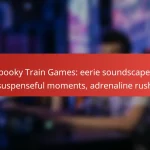Virtual reality train experiences offer a captivating blend of immersive technology and sensory engagement, allowing users to embark on realistic simulations of train travel. By utilizing advanced features such as high-resolution displays and motion tracking, these experiences transform ordinary journeys into interactive adventures, making them both entertaining and educational.

What are the best virtual reality train experiences in the UK?
The best virtual reality train experiences in the UK combine immersive technology with sensory engagement to create realistic simulations of train travel. These experiences allow users to explore iconic routes and operate trains, offering a unique blend of entertainment and education.
Eurostar VR Experience
The Eurostar VR Experience offers a captivating journey through the Channel Tunnel, allowing users to virtually board a Eurostar train. Participants can enjoy stunning visuals of the French countryside and the excitement of high-speed travel, all from a comfortable setting.
This experience is designed to showcase the speed and efficiency of Eurostar services, making it ideal for those interested in international rail travel. Users can expect engaging narratives and interactive elements that enhance the realism of the journey.
Railway Museum VR Simulator
The Railway Museum VR Simulator provides an educational and entertaining look at the history of rail travel in the UK. Visitors can step into the shoes of a train driver, experiencing the challenges and joys of operating various historical locomotives.
This simulator is particularly valuable for families and school groups, as it combines fun with learning. The experience includes detailed recreations of famous routes and trains, making it a must-visit for railway enthusiasts.
Train Sim World 2
Train Sim World 2 is a highly realistic train simulation game available on multiple platforms. It allows players to operate a variety of trains across different routes, providing an authentic experience with detailed graphics and physics.
This game is perfect for those who want to delve deeper into train operations, offering extensive customization options and a community of players. It’s suitable for both casual gamers and serious train aficionados, with regular updates adding new content and features.
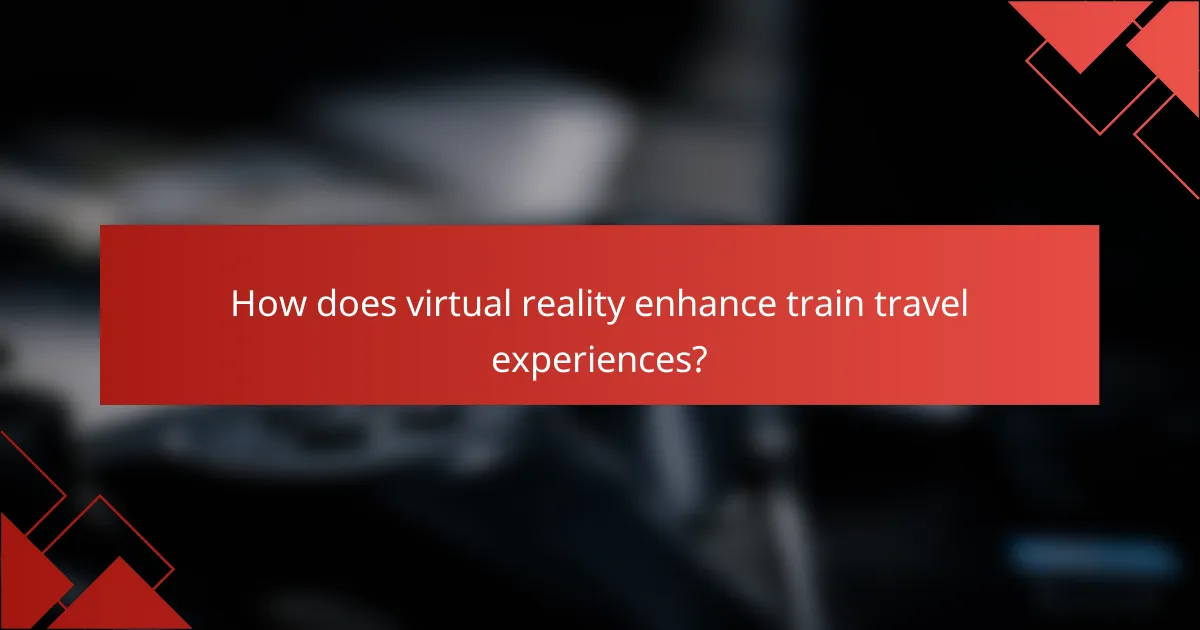
How does virtual reality enhance train travel experiences?
Virtual reality (VR) significantly enhances train travel experiences by creating immersive environments that engage multiple senses. This technology allows passengers to experience train journeys in a more interactive and realistic manner, making travel more enjoyable and informative.
Immersive sensory engagement
Immersive sensory engagement in VR train experiences involves the use of visual, auditory, and haptic feedback to simulate real-life travel. Passengers can see detailed landscapes, hear the sounds of the train and environment, and even feel vibrations that mimic the movement of a train.
For example, VR can simulate the feeling of acceleration or deceleration, enhancing the sense of realism. This multi-sensory approach helps passengers feel as though they are truly on a train journey, increasing their emotional connection to the experience.
Realistic simulations of train journeys
Realistic simulations of train journeys in VR provide detailed recreations of various routes, including iconic train travels around the world. Users can explore different train types, from high-speed rail to scenic routes, and experience the unique characteristics of each journey.
These simulations can also include interactive elements, such as choosing different destinations or experiencing various weather conditions. This level of detail allows travelers to plan real trips more effectively, as they can visualize their journey before boarding.

What technologies drive virtual reality train experiences?
Virtual reality train experiences are primarily driven by advanced technologies that enhance immersion and realism. Key components include high-resolution displays, motion tracking systems, and haptic feedback devices that collectively create a lifelike environment for users.
Oculus Rift technology
The Oculus Rift is a leading virtual reality headset known for its high-quality visuals and immersive capabilities. It utilizes dual OLED displays that deliver a wide field of view and low latency, making it ideal for train simulations where realism is crucial.
Users can experience realistic train environments through the Rift’s positional tracking, which allows for head movements to be reflected in the virtual space. This technology enhances the feeling of being in a moving train, making users feel as if they are truly onboard.
HTC Vive integration
The HTC Vive offers a robust virtual reality experience with its room-scale tracking technology. This feature allows users to move around in a designated space, providing a more interactive experience when exploring train environments.
With the Vive, users can engage with their surroundings, such as operating train controls or interacting with virtual passengers. The integration of motion controllers further enhances the experience, allowing for precise actions that mimic real-life train operations.

What are the benefits of using VR for train travel?
Virtual reality (VR) enhances train travel experiences by providing immersive technology that engages passengers’ senses and creates a realistic environment. This innovation not only entertains but also informs travelers about their journey, making it more enjoyable and memorable.
Enhanced passenger engagement
VR can significantly boost passenger engagement during train travel by offering interactive experiences that captivate users. For example, travelers can explore virtual landscapes or historical sites along their route, making the journey more informative and entertaining.
Additionally, VR can provide real-time information about train schedules, delays, and onboard services through engaging visuals. This sensory engagement helps passengers feel more connected to their journey and reduces perceived waiting times.
Training for railway staff
VR technology is increasingly utilized for training railway staff, allowing them to simulate real-life scenarios without the risks associated with on-the-job training. This method enables employees to practice emergency procedures, customer service interactions, and equipment handling in a controlled environment.
By using VR for training, railway companies can enhance staff preparedness and confidence, leading to improved safety and service quality. The immersive nature of VR allows trainees to experience various situations, ensuring they are better equipped to handle challenges in the real world.
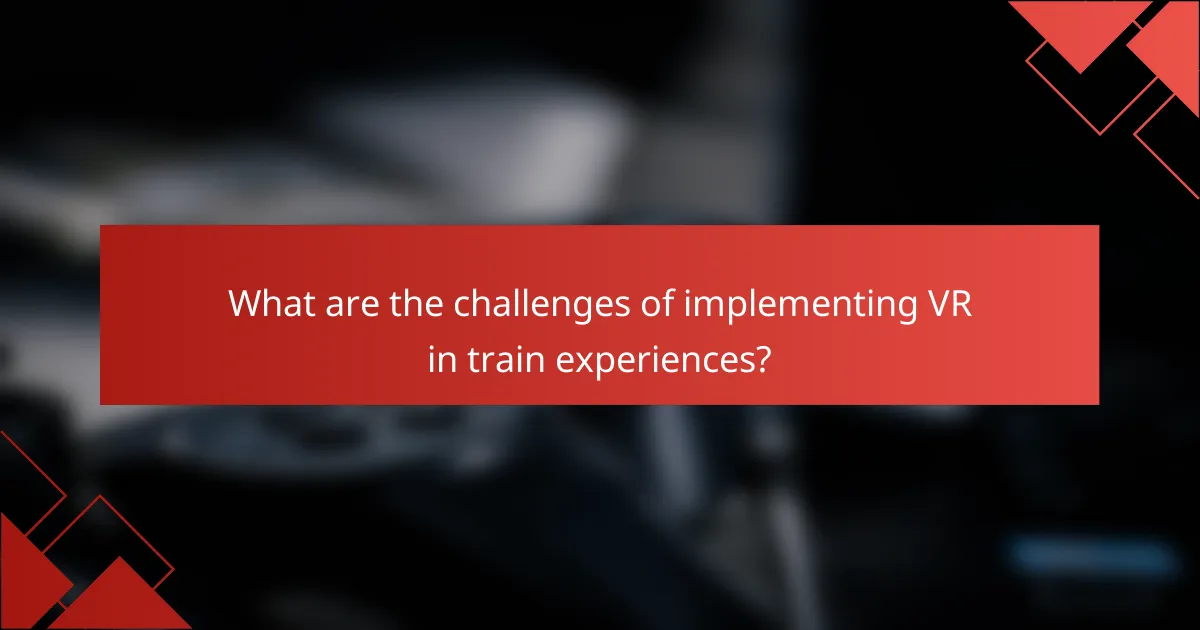
What are the challenges of implementing VR in train experiences?
Implementing virtual reality (VR) in train experiences faces several challenges, primarily related to high development costs and technical limitations of hardware. These factors can hinder the effective integration of immersive technology into train systems, affecting both the user experience and operational feasibility.
High development costs
The development of VR train experiences often requires significant financial investment, which can be a barrier for many companies. Costs can include software development, hardware procurement, and ongoing maintenance, potentially reaching hundreds of thousands to millions of dollars depending on the complexity of the project.
Additionally, creating high-quality content that engages users and accurately simulates train environments demands skilled professionals, further driving up expenses. Companies must weigh the potential return on investment against these costs to determine if VR implementation is viable.
Technical limitations of hardware
Current VR hardware can present limitations that affect the overall experience in train simulations. Many VR systems require powerful computers or consoles to run effectively, which can be a logistical challenge in train environments where space and power supply may be restricted.
Moreover, issues such as latency, resolution, and field of view can impact user immersion. For instance, even a slight delay in response can break the sense of realism, making it crucial to select hardware that meets high-performance standards. As technology evolves, staying updated on advancements can help mitigate these limitations.
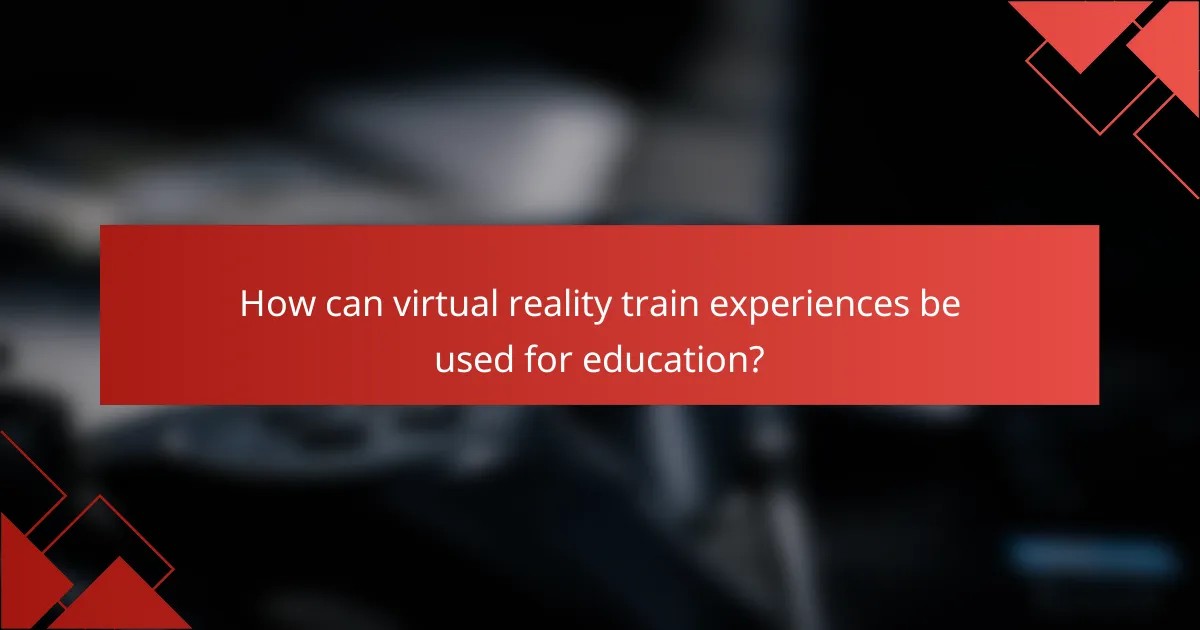
How can virtual reality train experiences be used for education?
Virtual reality (VR) train experiences can enhance education by providing immersive simulations that engage learners in historical contexts and scientific principles. These experiences allow students to explore train journeys and STEM concepts in a hands-on manner, fostering deeper understanding and retention.
Historical train journeys
VR can transport students to significant historical train journeys, allowing them to witness events like the Transcontinental Railroad’s completion or the impact of the steam locomotive on industrialization. By experiencing these moments firsthand, learners can better grasp the social and economic changes that trains brought to societies.
Educators can create guided tours through these historical contexts, integrating narratives and interactive elements. This method not only makes learning more engaging but also helps students develop critical thinking skills as they analyze the implications of these journeys on modern transportation.
STEM education through simulation
Virtual reality simulations can effectively teach STEM concepts by allowing students to interact with train mechanics and engineering principles. For instance, learners can experiment with train design, track layout, and the physics of motion, gaining practical insights into how trains operate.
Incorporating VR into STEM education encourages problem-solving and analytical skills. Educators can set challenges, such as optimizing a train’s speed or energy efficiency, prompting students to apply mathematical and scientific principles in a real-world context. This hands-on approach can significantly enhance comprehension and interest in STEM fields.
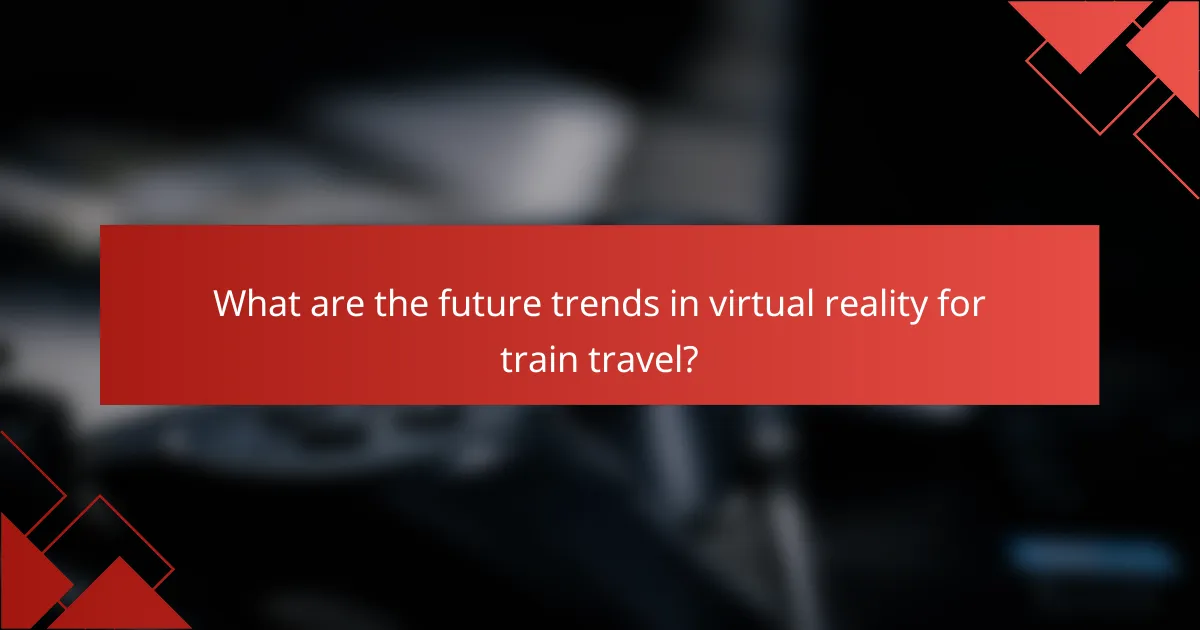
What are the future trends in virtual reality for train travel?
The future of virtual reality (VR) in train travel is poised to enhance passenger experiences through immersive technology, sensory engagement, and increased realism. Key trends include improved accessibility for disabled passengers and the integration of augmented reality (AR) features that enrich the travel experience.
Increased accessibility for disabled passengers
Virtual reality is set to significantly improve accessibility for disabled passengers by providing tailored experiences that cater to individual needs. For instance, VR can simulate train environments, allowing users to familiarize themselves with layouts and facilities before traveling.
Additionally, VR can offer real-time assistance through virtual guides, helping passengers navigate stations and trains more easily. This technology can also include features like audio descriptions and haptic feedback to enhance sensory engagement for those with visual or hearing impairments.
Integration with augmented reality
The integration of augmented reality with virtual reality in train travel will create a seamless blend of digital and physical experiences. Passengers may use AR glasses to receive real-time information about their journey, such as train schedules, platform changes, and nearby amenities, all overlaid on their actual surroundings.
This combination can enhance the realism of travel experiences, making navigation simpler and more intuitive. For example, AR can highlight accessible routes for disabled passengers or provide interactive historical information about landmarks visible from the train.


